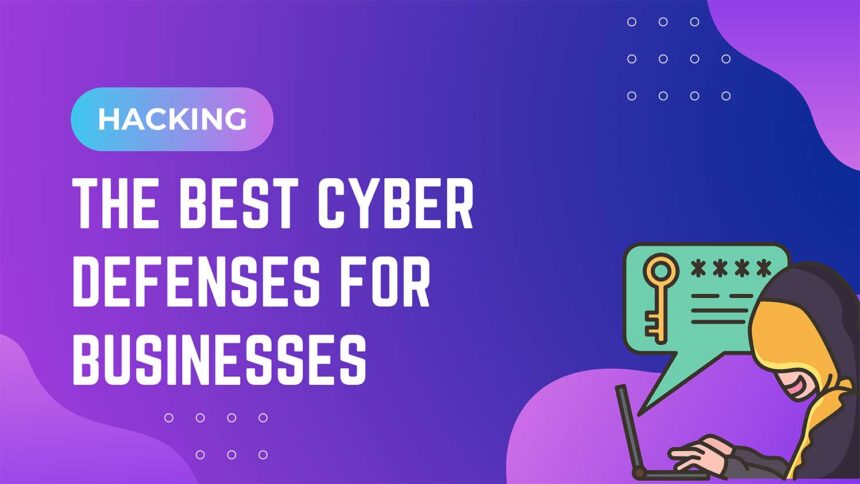As you step into 2024, the relentless pace of technological advancement is mirrored by the ever-growing sophistication of cyber threats. In this era of digital evolution, businesses find themselves on the frontline of an escalating cyber war. To navigate this treacherous landscape, implementing robust cyber defenses is not just a choice; it’s an imperative for survival. In this article, delve into the best cyber defenses that businesses should adopt in 2024 to fortify their digital fortresses.
1. Advanced Endpoint Protection: Safeguarding Every Device
The proliferation of remote work has expanded the attack surface for cybercriminals. Advanced Endpoint Protection (AEP) goes beyond traditional antivirus solutions, offering real-time threat intelligence and behavioral analysis. By safeguarding every device connected to the network, AEP ensures that even the most sophisticated malware is thwarted before it can compromise sensitive data. Incorporating whitelisting as part of AEP allows organizations to define a list of trusted applications and processes, further enhancing security by permitting only authorized software to run on devices.
2. Zero Trust Architecture: Trust No One, Verify Everyone
In an era where perimeter defenses are no longer sufficient, Zero Trust Architecture emerges as a paradigm shift in cybersecurity. The fundamental principle is simple: trust no one and verify everyone, regardless of their location within the network. By adopting a zero-trust model, businesses can mitigate the risk of internal and external threats, ensuring that every user and device is continuously authenticated and authorized.
3. Artificial Intelligence and Machine Learning: The Power of Predictive Analytics
The future of cyber defenses lies in the integration of Artificial Intelligence (AI) and Machine Learning (ML). These technologies empower cybersecurity systems with predictive analytics, enabling them to anticipate and counteract emerging threats. From identifying patterns in user behavior to detecting anomalies in network traffic, AI and ML provide businesses with a proactive defense mechanism that evolves with the threat landscape.
4. Cloud-Native Security: Protecting Assets in Virtual Realms
As businesses increasingly migrate to cloud environments, cyber defenses must evolve accordingly. Cloud-native security involves deploying solutions specifically designed for cloud infrastructures. This includes robust access controls, encryption protocols, and continuous monitoring. By protecting assets in virtual realms, businesses can harness the benefits of cloud computing without compromising on security.
5. Incident Response and Cyber Resilience: Prepare for the Inevitable
No defense is foolproof, and preparing for the inevitable is a cornerstone of effective cybersecurity. Incident Response (IR) and Cyber Resilience strategies ensure that businesses can quickly detect, respond to, and recover from cyber incidents. This involves not only technical aspects like threat hunting and forensics but also comprehensive planning, training, and regular simulations to fortify the organization’s resilience in the face of cyber threats.
6. Network Segmentation: Containing Threats Effectively
Network Segmentation is an indispensable strategy for limiting the lateral movement of cyber threats. By dividing the network into distinct segments, each with its own security controls, businesses can contain breaches and prevent attackers from freely navigating their infrastructure. This ensures that even if one segment is compromised, the impact is localized, reducing the overall risk to the organization.
7. Continuous Security Training: Empowering the Human Firewall
Amid the cutting-edge technologies, the human element remains a critical factor in cybersecurity. Continuous Security Training is essential for cultivating a vigilant and informed workforce. Educating employees about the latest threats, phishing techniques, and best security practices transforms them into the first line of defense. A well-informed workforce becomes a formidable barrier against social engineering attacks and inadvertent security lapses.
8. Multi-Factor Authentication (MFA): Fortifying Access Controls
In the realm of access controls, Multi-Factor Authentication (MFA) is non-negotiable. MFA adds an additional layer of security by requiring users to authenticate their identity through multiple verification methods. Whether through biometrics, tokens, or one-time codes, MFA fortifies access controls, thwarting unauthorized access even in the event of compromised credentials. As passwords alone become increasingly vulnerable, MFA is a crucial defense mechanism.
Conclusion
As businesses navigate the complexities of the digital landscape in 2024, a resilient cyber defense ecosystem is the linchpin of their survival. The best defenses are not static; they evolve with the threat landscape. By embracing Advanced Endpoint Protection, Zero Trust Architecture, AI and ML, Cloud-Native Security, Incident Response, Network Segmentation, Continuous Security Training, and Multi-Factor Authentication, businesses can construct a formidable defense that anticipates, mitigates, and recovers from cyber threats. In this ongoing battle, the proactive integration of cutting-edge technologies and comprehensive strategies is the key to not just surviving but thriving in the digital age.











